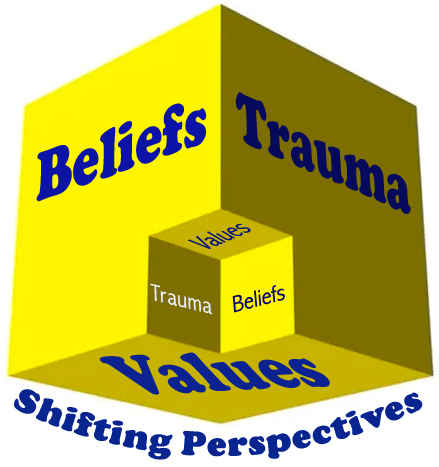
My Journey to seeing emotions as power.
My journey to seeing emotions as power has been a life long process, starting long before I was a mental health therapist. It began as an curious, artistic, hyper ADHD child running around asking “why” to understand the world, and then enthusiastically creating innovative solutions by connecting the dots inside and outside the box. In high school, I discovered and took to heart Mark Twain’s quote, “Never let schooling interfer with your education.” I was always eager to question everything, which some teachers didn’t appreciate. I strove to learn in and outside of the classroom. Everything was open to questioning, as my curiosity outweighted my fears often, and I was off exploring and learning in my own world.
My educational interests gravitated towards the mental health profession, obtaining a degree in Child Psychology and Social Welfare, while still clinging to science, especially botany, and the visual arts. In 1985 while attending social work graduate school, in a rather boring statistics class, I was introduced to Edward Deming’s concepts of quality service delivery and I could envision how his concepts to build a quality process for manufacturing cars could be used to improve mental health services. This was the start of the path to seeing emotions as power and creating a new vision for the process of mental health therapy.
The vision to build quality into the mental health therapy process was realized 20 years later. In 2005, I openned a mental health clinic and began implimenting a BCA Holistic approach, which looked at the whole person as well as the parts: B=Behaviors; C=Cognition/Thoughts; A=Affect/Emotions. Each BCA part was recognized and approached differently, using coaching for behaviors, teaching for cognitions and therapy for affect. The approach to affect changed as my understanding of emotional powers changed.
In looking at the BCA parts, I was initally thrilled with Daniel Goleman’s Emotional Intelligence, which emphasised the importance of emotions, but as I learned the concepts and put them into practice, the emotional intelligence insights became inconsistent and stopped making sense. They resumed making sense on a consistent basis, with a simple, yet profound, shift in perspective away from emotions providing intelligence and towards emotions providing power. With that function shift – intelligence to power – recognizing that emotions don’t tell us what to do and that we are not driven by instincts, that emotions finally started making sense again and have continue to do so.
In 2016, I began providing individual therapy at Allina Health and further refined the BCA Holistic approach, with a focus on understanding emotional power, as well as further incorporated my 2002 EMDR training related to PTSD trauma, and 1998 DBT training related to mindfulness and difficulties managing emotions. In 2018, I presented my BCA Holistic approach at the Minnesota Social Work conference, which received positive feedback. However, I was still working full time so my energy and focus was on providing therapy and enjoying my personal life.
In my therapy practice, the results of my BCA holistic approach viewing emotions as power was very positive and effective, resulting in more client referals than I could handle. Clients frequently asked for written handouts to help remember and use specific interventions, so I created several handouts. Clients also asked for referals to other therapist using an emotionally powered BCA Holistic approach, but unfortunately, I was the only therapist using such an approach. For years, I listened to clients suggesting I write down my approach, which I had been doing when I could between work and life.
At the end of 2020, I finally decided that if I am ever going to write down the essence of emotional power and the BCA Holistic approach that I needed to take time to do so, or just give it up and let it go. It was a “shit or get off the pot” moment. I didn’t need to write this book because everything in it I have been doing and living for years, which has improved the quality of my life and those around me. But, I wanted to write this book and reach out because I believed it could help make this world a better and kinder place by helping to improve the quality of all our lives.